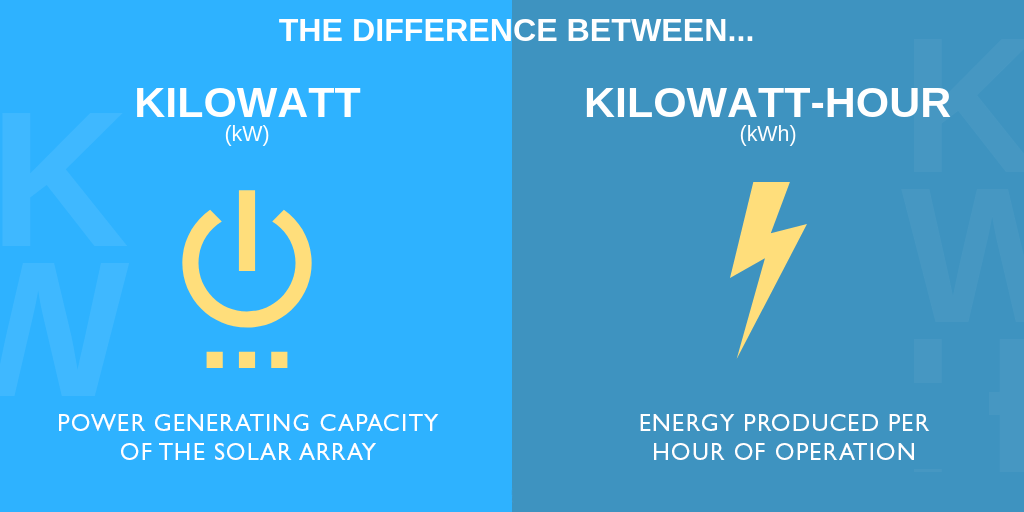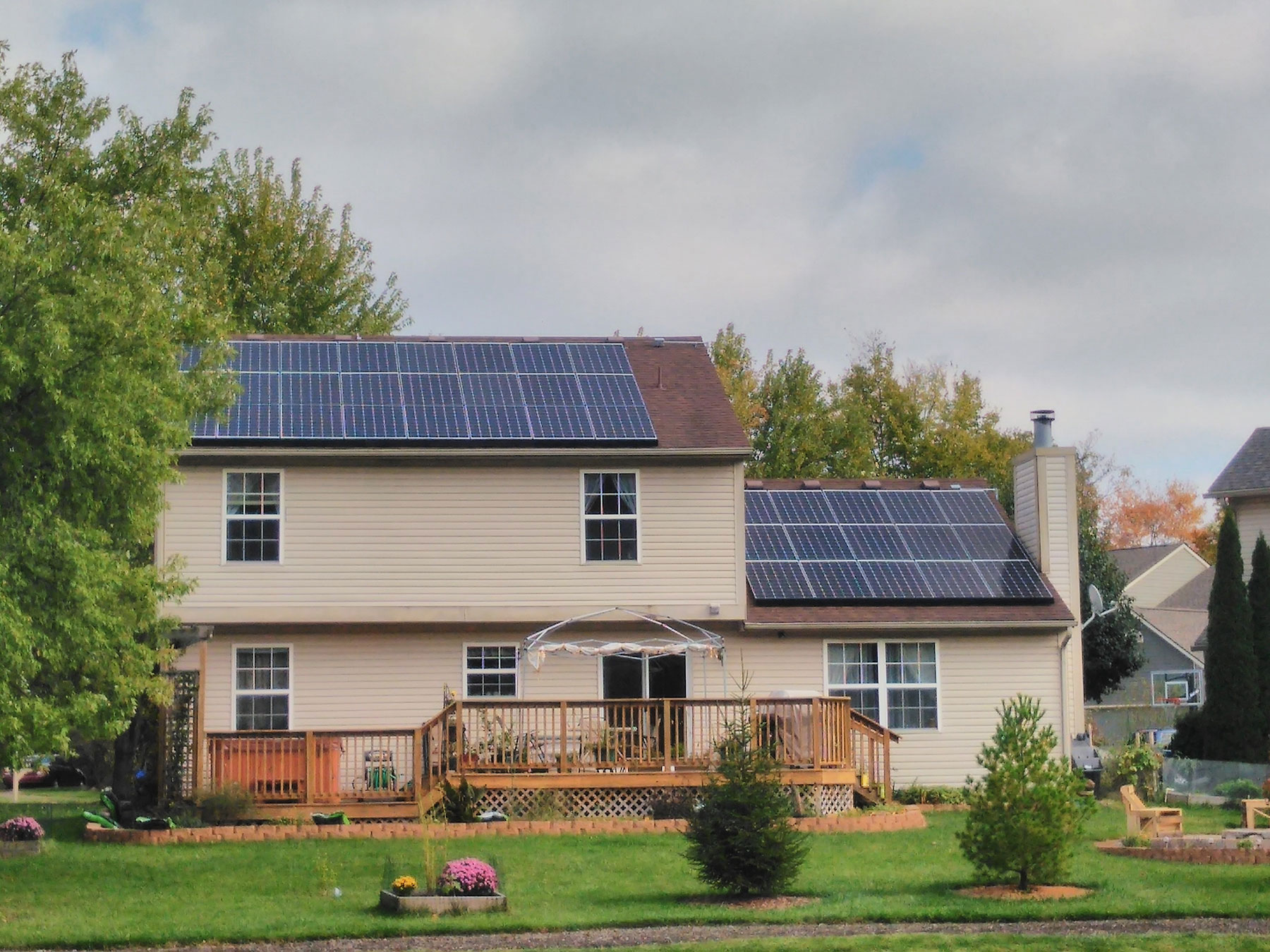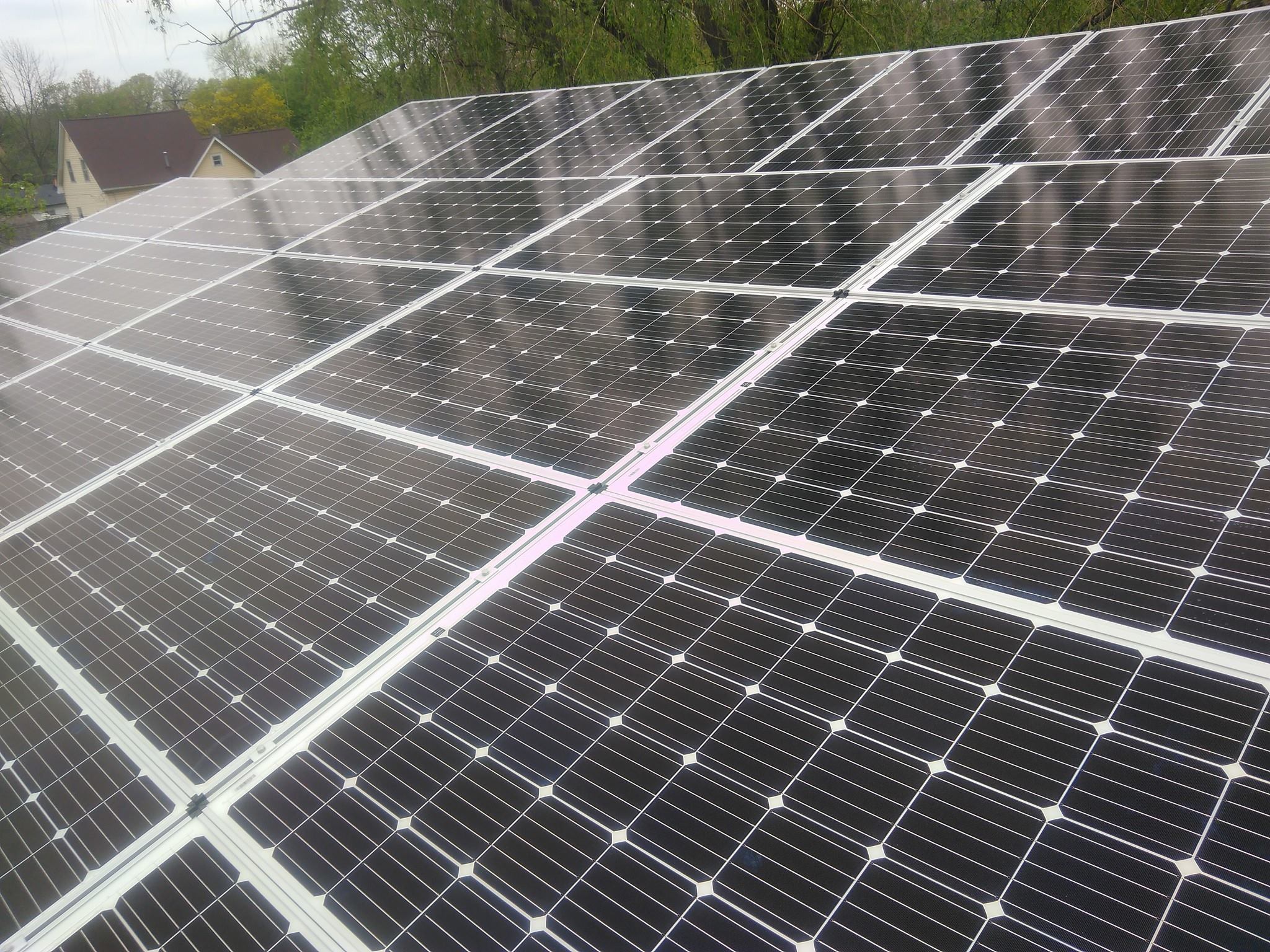
This article is going to entail a bit of a physics lesson to explain fully. Just know that you are not alone if you are a bit confused when you start speaking with a professional about kW (kilo-Watts) and kWh (kilo-Watt hours) in conversations about solar for your home.
Here is the short version: Power and Energy are not the same.
Power is defined as the ability to act or do something (the Ability or Potential). When you add time to ability, then you have Energy. Energy is like a force, and when a force is acted upon an object over a distance, this is called work. Your mind is currently empowered by wants and desires to learn about solar, and that is why you are reading this article. You are spending time reading this, therefore energy, and allowing your eyes to move and read this text. You are doing work to learn about solar!
Let us apply this to Solar. In physics, the units for Power are Watts. A single watt is equal to 1 Volt X 1 Ampere. It just so happens that a solar panel produces voltage and amperes. So, a solar panel by itself has the potential to produce energy and do work just like you. When you combine it with an inverter, your solar installation will provide the energy needed so that your appliances can do the work you do not want to do so that you have an easier and more productive life doing things you want to be doing.
The kilo-Watt
Understand that the wattage of each solar panel varies. Knowing this, let us assume that a 60-cell module possesses the ability to produce approximately 330 Watts. To keep it simple, do some rounding and say that three solar panels will produce 1,000 Watts or 1 kilo-Watt.
When you evaluate solar systems for your home, you will notice the energy advisor will speak about your system size in kilo-Watts (kW). The energy produced from that system, Watts X Time (kWh), will depend on the solar radiation data where you live. The graph below shows the irradiation map for the entire USA. You will see that the data can be vastly different depending on your geographic location. Understandably, Alaska will have the lowest solar potential, and desert areas have the highest.
Since we are headquartered in Indianapolis, we will use it as an example to show expected hours/day of available sunlight. See the graph below.
As you can see and expect, due to the earth’s tilt, latitude, and weather during each season; the winter months have far less solar radiation than that of the spring, summer, and fall.
With the proper software, an accurate design, and the right solar panels and inverter in place, an energy advisor with Rectify Solar can walk you through the expected production out of a system for your home. By bringing your current energy usage to the table, you could see exactly what to expect each month out of a solar array. Then, you can use that data to compare different systems and evaluate what you need for your individual situation.
Just note, there are several factors that play into the performance of any solar installation. To learn more pertaining to this subject, feel free to explore the following articles within our knowledge center:
What is the best roof spot for solar?
How many solar panels do I need for the square footage of my home?




